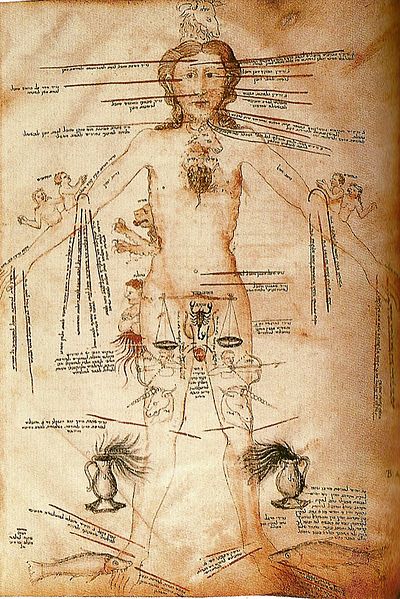For centuries, the name of Arnau de Vilanova has been associated with a wide variety of occult arts which had been handed down with the Greco-Arab sciences magic, necromancy, astrology, alchemy, oneiromancy – until he became an archetypal figure of the master of the occult. Likewise, he was also spuriously attributed numerous works from these disciplines. So what element of truth is in this fame? The fact is that Arnau was one of the authors who spearheaded the process of rationalising and incorporating late medieval therapeutic procedures coming from natural magic and astrology into Galenist medicine.
Indeed, some of his theoretical treatises develop the concept of proprietas, which he also calls “occult virtue”, because neither its causes nor its effects can be fully grasped by human reason, in contrast to the more constitutional qualities, which are predictable by reason. As an example he cites the effects of a magnet. In consequence, in some of his practical medical texts he advises remedies of this kind, such as applying the legs of a frog, turtle or eagle on the feet to soothe the pain of gout.
We have proof that Arnau began to use some therapeutic measures based on astrology after 1300. Specifically, he warned that adverse astrological conditions should be avoided when bleeding patients, and he recommended applying astrological seals or medals over the members affected by pain, as he did to relieve Pope Boniface of the pain caused by his gallstone. Both indications were based on the zodiacal melothesia, which claims that each part of the human body falls under the influence of a given zodiac sign.
These were quite striking resources during his period, and even today. However, it is important to note that this kind of resource was quite rare in Arnau’s medicine: the vast majority of his therapeutic measures were based not on astrology and magic but on diet and compound medicines based on the patient’s constitution. In conclusion, Arnau’s interest in the occult did not stretch beyond the limits that were more or less accepted by the intellectual elites of his day, in line with the systematic attack on the intellectual foundations of necromancy contained in De reprobacione nigromantice ficcionis.
